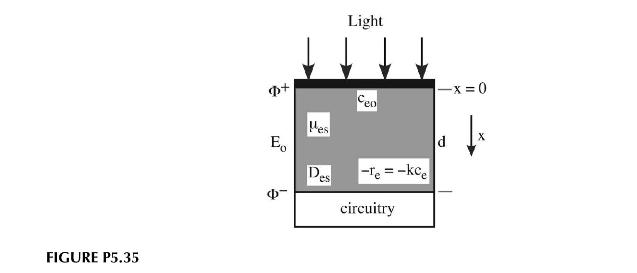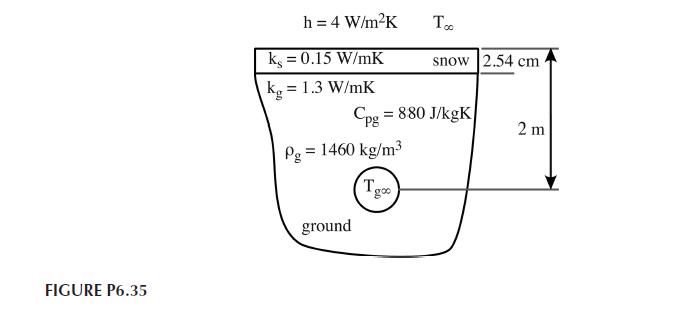Avalanche photodiodes work on a bit different mechanism from that discussed in problem 5.33. Here a thin
Question:
Avalanche photodiodes work on a bit different mechanism from that discussed in problem 5.33. Here a thin photosensitive layer is used as the source of electrons (Figure P5.35). Those electrons enter a second layer or layers where they generate more electrons by collision with the material. It is akin to having an autocatalytic reaction proportional to the electron concentration.
\[-r_{e}=-k^{\prime \prime} c_{e}\]
a. Assuming that electrons diffuse through the second layer as they collide with that layer to generate new electrons, determine the concentration profile and flux of electrons into the circuitry. You can use the same boundary conditions as in problems 5.33 and 5.34.
b. Assuming we also apply a constant electric field across the device, determine the concentration profile and flux into the circuitry.
Problems 5.33
In Fahrenheit 451, Ray Bradbury writes about firemen whose job it is to burn books. The 451 refers to the temperature (232.8°C) at which paper starts to burn. Assume we have a 4 cm thick book thrown atop a fire burning from below. The fire provides a temperature of 650°C and the pile limits the heat-transfer coefficient to the book to be 450 W/m2 K.
The properties of paper are:
Problems 5.34
Revisit the example of diffusion and instantaneous reaction of Section 6.5.2. There we determined the flux of species a through the original vapor–liquid interface at y = 0. However, we would really like to know the flux at the interface defined by the reaction front y′. Using the solution and the values for the parameters given in the section, determine the flux of a at y′. Does the flux of b equal that of a at y′? 
Step by Step Answer:






